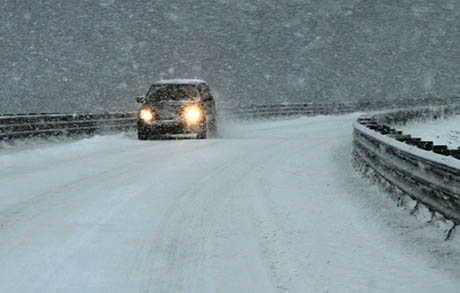Reduce Your Speed
Driving with reduced speed is one of the most important things you can do when snow's on the ground. Don't be lulled into a false sense of security with the technology in today's cars. Four-wheel drive, anti-lock brakes and traction control certainly help, but only to a point. They can't take the place of good driving habits and the need to reduce speed when roads are slippery.
While driving at any point during a winter storm can be difficult, there are times when you should be extra cautious when traveling:
- At the start of the storm - Not all roads my be treated yet.
- During very heavy snowfall - Snowfall rates exceeding an inch an hour will lead to accumulation on the road in between passes of the plow.
- During peak travel periods - Storms hitting morning and evening rush hours are a recipe for congestion and delay. Even secondary roads can experience unusually long backups as people seek alternate routes to car-clogged highways.
- During changing weather conditions - Changes from rain to snow or vice versa can create special hazards including black ice, localized flooding or downed limbs or power lines from heavy snow or accumulated ice.
- After a storm, when temperatures drop below freezing - Black ice often develops in the evening following a storm due to snow melt washing off residual salt on pavement and re-freezing.
RIDOT takes every effort to alert motorists to changing conditions. Before you leave, review the travel planning resources on this website or check our Facebook or Twitter pages, which may have more current announcements. When on the road, look to our electronic message boards or Highway Advisory Radio system (1630 AM) for vital travel information.
After the storm, clear all snow and ice from your windows, hood, roof and trunk of your vehicle. This is especially important for drivers of box trucks, tractor-trailers and other large vehicles. A sudden release of snow or ice on the highway can create hazardous driving conditions, cause a crash or damage a vehicle behind you. Clearing ice and snow from your vehicle is not only a good idea, it's a law.
Give Plows and Sanders Space to Work
Snow removal equipment is big and heavy and our drivers are very focused on effectively clearing the roads. Remember to not "crowd the plow" and give these trucks plenty of room.
The best place to be during a storm is behind a plow truck. Drivers should stay at least five car lengths behind to give them ample room to operate. Do not pass, especially on the right where large amounts of snow are kicked up by plows.

